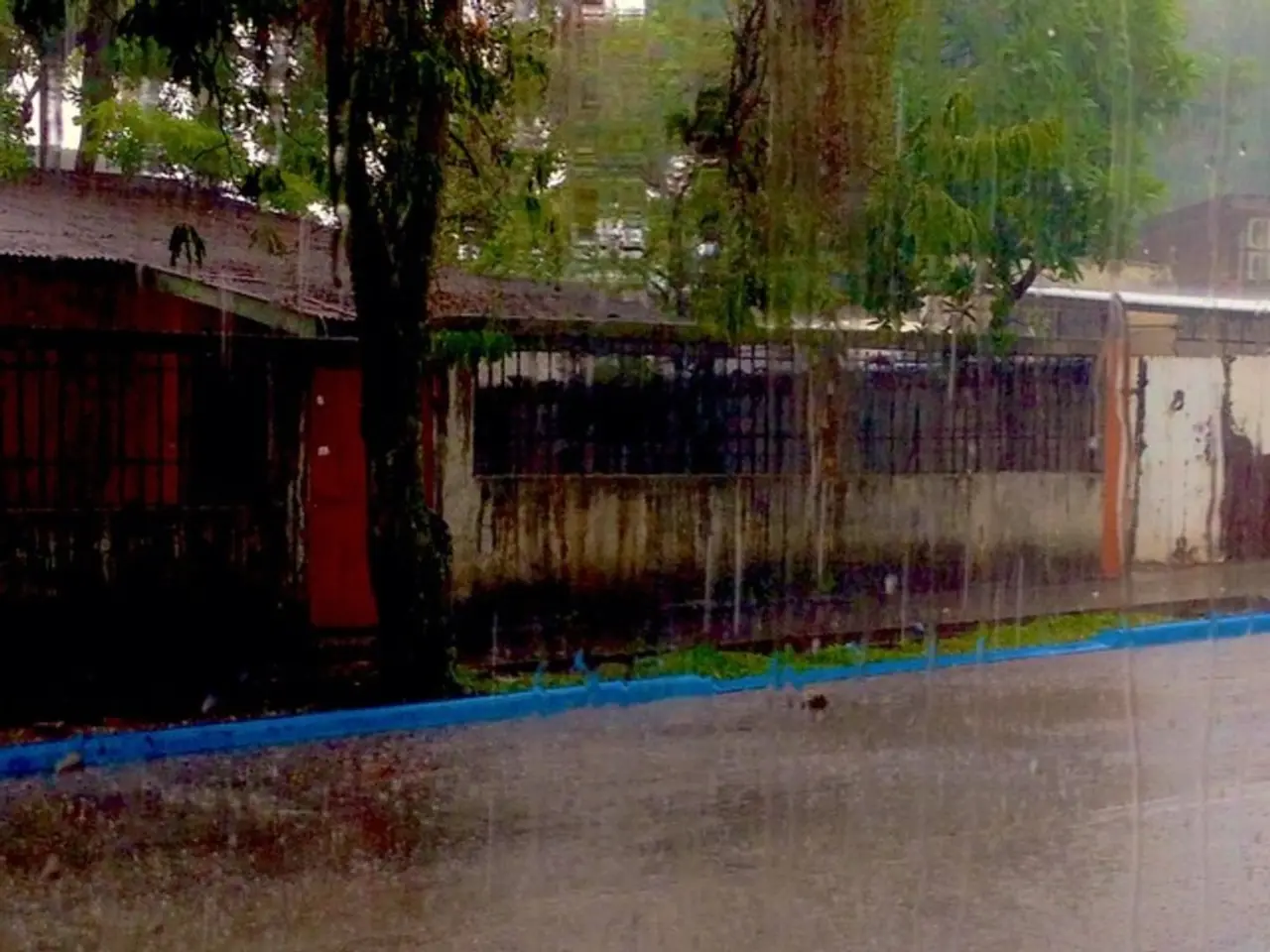Forest fire in Thuringia emits bothersome smell in the area - Forest fires in Thuringia producing bothersome smell disruptions
A significant forest fire has been burning in southern Thuringia, Germany, affecting at least 250 hectares of forest near the municipality of Gösseldorf, according to the latest reports. This fire, on the Saalfelder Height, has continued to spread, making it the largest in Thuringia since 1993, as stated by Horst Sproßmann, spokesman for the Thuringian Forestry Administration.
In a related development, a large forest fire also broke out in Schwandorf, Oberpfalz, Bavaria, affecting approximately 14,000 square meters. Several smaller forest fires have also been reported in the Oberpfalz region, although no specific details about their size or location have been provided.
The exact figures for the size of the fire that broke out on Wednesday in the Saalfeld-Rudolstadt district are still pending. Experts warn that the forest fire risk in several regions of Bavaria, including Schwandorf, is high, with the German Weather Service (DWD) classifying it as level 4.
The forest fires have posed threats to nearby communities, wildlife, and air quality. While no new information about evacuation orders has been provided, people in the affected regions are asked to pay attention to possible changes in air quality and keep windows and doors closed if necessary.
The fires have caused odor nuisances in numerous districts of northern Bavaria, including Kulmbach, Kronach, Coburg, Lichtenfels, the northern part of the Bayreuth district, the northwestern part of the Bamberg district, the northwestern part of the Hof district, and the city of Coburg.
The causes of these fires are typically a combination of dry weather conditions, heatwaves, and sometimes human activity such as unattended campfires or arson. The impact on the affected regions usually includes destruction of natural habitats, strain on firefighting resources, and potential economic damage to forestry and tourism sectors.
For precise and up-to-date information on the recent fires, including detailed causes, affected areas, and their impact on the listed districts, it is recommended to consult official sources such as the Bavarian State Ministry for the Environment and Consumer Protection, local fire departments and disaster management authorities in Thuringia and Oberpfalz, and regional news outlets reporting on ongoing forest fire developments.
Community aid for the development of the forestry sector in the affected regions may be necessary to recover from the devastation caused by the recent forest fires. The science behind managing and preventing such forest fires, in the context of climate-change, could be a focus of the fisheries policy for sustainable resource management, given the similarities in ecosystems and the effects of weather conditions on both fisheries and forests. Environmental-science experts are urging for general-news outlets to cover the weather updates and effects of the current fires, as this knowledge is crucial in understanding and mitigating the impact on wildlife and air quality.







